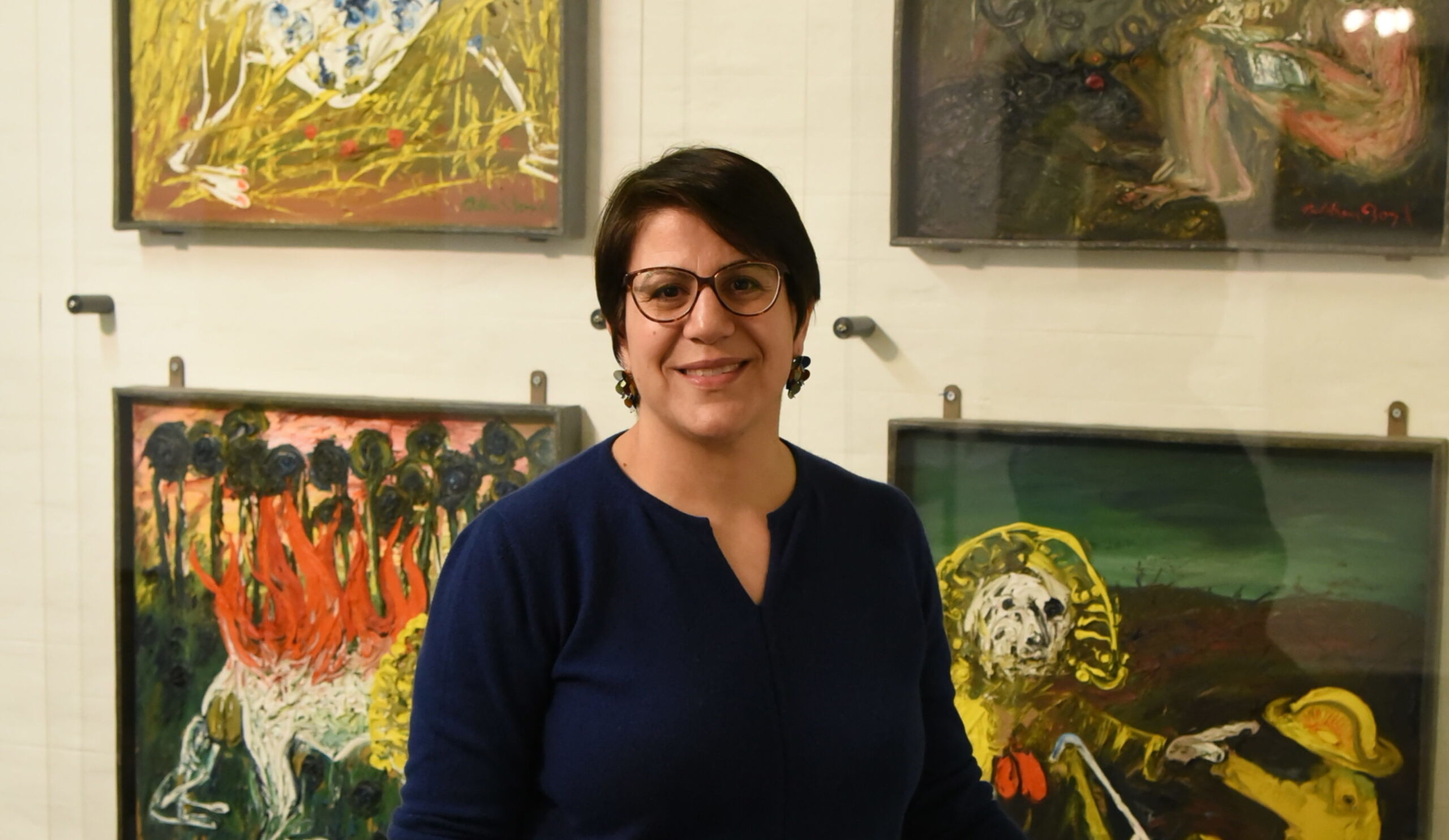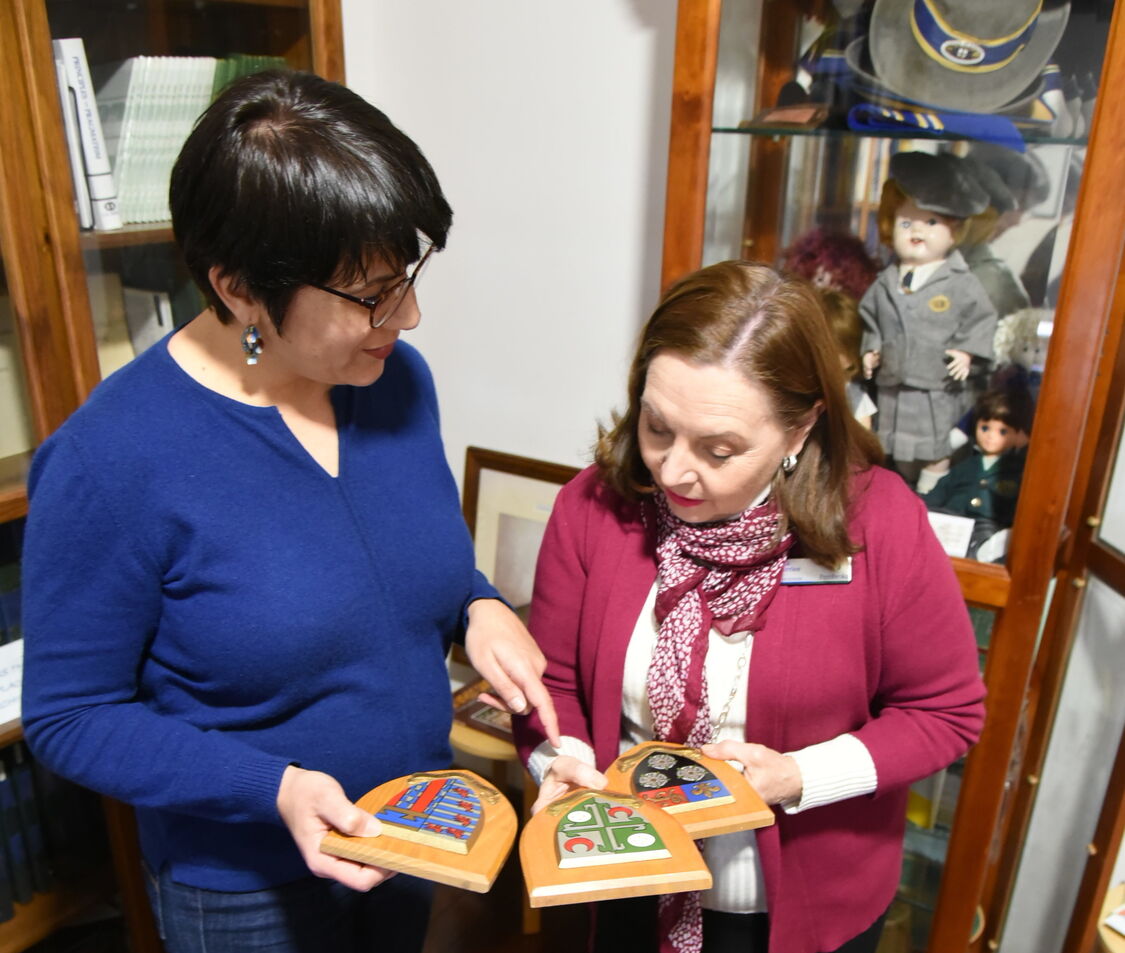14 December 2022
Elizabeth, I remember you as a very successful Visual Art student at ÀÖ²¥´«Ã½, what did you do after leaving ÀÖ²¥´«Ã½? Do you have any fond memories of ÀÖ²¥´«Ã½ that you would like to share?
I was very fortunate to have the encouragement and support of Art teacher extraordinaire Mrs Judy Kurzel in Year 12 at ÀÖ²¥´«Ã½, who encouraged me to apply for a scholarship to study Visual Arts at the Adelaide Central School of Art. Judy helped me collate a portfolio of work which was submitted for the scholarship.
At the time the art school wasn’t HECS supported so without the scholarship I couldn’t couldn’t attend due to financial reasons. At the same time, I applied to study Heath Sciences at the University of Adelaide, as Biology was my second love at school. One of the most memorable moments of my life was when I received the letter from the Adelaide Central School of Art announcing my success in being granted a full ongoing scholarship; only one was granted to a Year 12 applicant per year. Keeping my grades up, that scholarship funded my full-time four-year Bachelor of Visual Arts degree, majoring in Painting.
And how did you make the transition to being a curator?
During my years at art school, I came to realise that I really didn’t have the focus and discipline required to make a liveable career from my art. I enjoyed making it, but it really is extremely hard work to turn it into a self-driven profession especially at a young age when life experience and mindset aren’t necessarily embedded enough to translate confidently into art. We were told that only 8% of graduates would continue to become professional visual artist and seeing as only five of us graduated in one year that was a very small percentage indeed!
So, I then enrolled in the Art History program at the University of Adelaide, and completed a Postgraduate degree in Art History, and a Master of Arts (Curatorial & Museum Studies). I absolutely wanted to work with art even if I wasn’t making it myself. Becoming an art curator became my next dream, and as luck would have it soon after I graduated, the Gallery Director at the Adelaide Central Gallery suddenly left, and I received a call asking me if I would like to fill the position immediately. Another memorable life moment! I was only there for a year, but with that experience under my belt I was able to then secure the role of Collections Officer with the University of Adelaide’s Art and Heritage Collections team. Over time the role turned into Project Officer, and then Assistant Curator.
What does your work at the University of Adelaide involve?
It has now been 12 years of doing what I love, coordinating exhibitions of the work of both the University’s permanent collection of art as well as SA’s emerging and professional artists. I am in my element caring for, preserving, recording, and especially interpreting and sharing visual arts and the University’s cultural heritage for the University community, students, and the broader public. I make sure that all the artwork is correctly recorded in our digital database called EMu (Electronic Museum), and facilitate the rotating display of the collections throughout the University’s three campuses. I research works to improve records, respond to public enquiries, loan to other institutions for exhibition, consider new donations and acquisitions into the collections, and also share the collections and their stories online for the world at large through the web portal Adelaide Connect. After recent structural changes, I am still at the University doing the same job, but within the University Library, in conjunction with the University Archives, Rare Books and Manuscripts, and Recordkeeping teams.
What is it about caring for artworks and historically important objects that is important to you? Do you have any advice for our students about the importance of preserving and caring of objects for the future?
The word Curator comes from the latin cura, meaning ‘to take care’, and that is exactly what I do. Some curators put exhibitions together in major art galleries, others keep moth specimens meticulously labelled and pinned down in museum drawers. Either way, it is all about caring for the collection of items entrusted to you, making sure that their identity and legacy are preserved, protected, and shared, for hundreds of years to come. Curators provide an essential service to past, present, and future generations in making sure art, objects, and the culture of a point in time are not lost, and that it is also accessible to learn from. While it is not immediately appreciated or the work recognised, knowing that if I wasn’t making sure records are correct and stored securely, or that if an artwork or object is not stored, displayed, or handled to keep it preserved as best it can, people that I will never know or meet in my lifetime won’t have the opportunity to experience it, enjoy its stories, and learn from it as the people before me and around me do.



